
Figure 1: Visual concept of the immune system: antibodies and virus. Credits © Shutterstock
Genevia Scientific Research Finds Evidence About Food Quality and Immunity
In the heart of today’s COVID-19 explosion, a global pandemic titan, one thing comes to mind; How can we protect ourselves and others?

Figure 2: Credit ©2020 Pixabay, Image by Alexandra Koch
People of all ages, health experts, immunologists, epidemiologists and scientists from all over the world, focus their efforts on taking care of patients, looking out for front line health staff and finding a cure to fight this new disease. The coronavirus family, SARS-CoV-1 and MERS-CoV are well known but SARS CoV-2 causing COVID-19 is new. Countries and research institutions globally, engage in finding the cure.
Best practice in terms of social distancing (staying home) and hygienic measures (washing hands etc.) are all over the media, trying to advise and guide people to protect themselves.
Boosting people’s immunity, the body’s natural shield against diseases, is in the spotlight. People find themselves adapting to their new routine, working from home, homeschooling their kids, cooking and cleaning. Online sales, related to health care products, food supplements and nutrition services are skyrocketing. Consumers have turned their focus on being proactive these days. Government has asked that we take responsibility for our health, that we show leadership, that we act responsibly and that we self-protect.
If boosting our immunity against foreign invaders is our objective in this midst of flooding advice, health and nutrition tips, how can each one of us find the right way to care for ourselves?
Genecia Lifesciences scientific research, presents evidence that the food we eat today, is not as nutrient dense as it was a few decades ago. We hear and read that a healthy diet is the proper way to boost our immune system, for our ultimate health and wellness status. In fact, this seems to be a myth as there is emerging evidence showing that the food we eat has changed and possibly leaves vulnerable groups of people with nutrient gaps through poor quality food.
Nutritional data from worldwide studies, records and statistics shows how the quality of the food we eat today has been affected through the last decades. We are now in position to identify the core of the scientific knowledge available.
Emerging evidence of nutrient decline in food
About 820 million people globally are affected by crops’ yields decline and agronomic production resulting in food-insecurity (lack of physical and economic access to food) and low concentration of protein and micronutrients (e.g., Zn, Fe, Se, B, I) 1 .
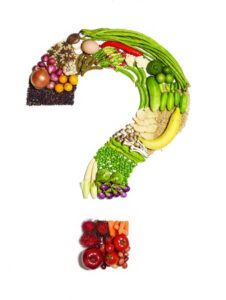
Figure 3: Are fruits and vegetables becoming less nutritious? Credits: © 2020 Shutterstock
Especially, amid the coronavirus pandemic, food security and supply chain will be further challenged for the 113 million that cope with acute food insecurity.
The World Health Organization (WHO) reports that 11% of the world’s population are undernourished2. In some cases, literature presents that comparisons of historical food nutrients composition overtime is not a reliable way to assess these changes. Limitations like differences in geographic origin, variety and nutrient content of same crops, genetic variations, sample size, sampling methods, analytical and statistical methods could pause a challenge for drawing reliable conclusions for nutrient content decline in our food 3 .
On the other hand, there is an important volume of studies in literature that express concern over declining nutrients mostly that of minerals in crops due to elevated CO2 concentration and climate change.
Laboratory mineral nutrient analysis in wheat grains and soil samples showed significant decreases in Zinc (Zn), Copper (Cu) and Magnesium (Mg) which coincided with the introduction of high yielding cultivars (shorter with higher yielding plants) 4 5. .
Another study using replicate field trials assessed how increased yield of wheat affected seed micronutrient content. Results suggested that US hard red winter wheat genetic gains tended to reduce seed Iron (Fe) , Zinc (Zn), and Selenium (Se) concentrations, although location, variety and environmental factors could influence these results 6 .
Reanalysis of historical recordings of fruit and vegetable mineral nutrient composition, and among the statistically significant Ratios (R) calculated, apparent declines in vegetables nutrient concentration were shown.
Recent historical nutrient content data, spanning 50 to 70 years for fruits and vegetables show apparent declines in minerals, vitamins, and protein in some groups of foods, especially that of vegetables. Even if systematic errors in historical data have been reported in individual nutrients, this evidence cannot be dismissed.
Alarming concern for CO2 to alter nutrient profile in food
Global CO2 emissions surpassed 400ppm in 2016, the largest measured global concentrations of atmospheric CO2 in modern history8.
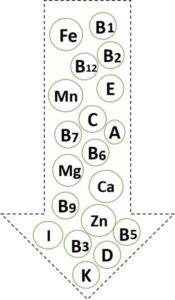
Figure 4: Nutrient levels expected to drop significantly due to rising levels of CO2.
Scientists working on global warming and climate change, report that soil contributes 20% of the total emission of CO2 to the atmosphere and the latter accounts for 60% of global warming 9 .
There is evidence that CO2 generated from anthropogenic emissions threat human nutrition by disrupting the global climate system associated with food production and by directly altering the nutrient profile of staple food crops. Experimental trials of crops grown in open field conditions under both ambient (380-390 ppm) and elevated (545-585ppm) CO2 expected by 2020 revealed decreased concentrations of Iron(Fe), Zinc (Zn) and sometimes protein concentrations in many important food crops, like wheat, rice, maize and soybeans10. Expecting CO2 to reach 550ppm by roughly the end of this century, studies have shown that rising levels of CO2 are affecting human nutrition by reducing levels of very important nutrients in very important food crops affecting millions of people globally11.
192 Million Tons of fertilizers used in 2017
192 Million tons (Mt) of chemical and mineral fertilizers were provided as input to agricultural soils in 2017. 109 Mt nitrogen (N), 45 Mt phosphorus (expressed as P2O5) and 38 Mt potassium (expressed as K2O)12. In 2017, the highest Nitrogen inputs by country were recorded in China, then India, the United States of America and Brazil. Intense fertilizer use also leads to water health hazard risks for humans, a major concern for developing countries as well as marine life.

Figure 5: Global Nitrogen inputs to agricultural soils from mineral and chemical synthetic fertilizers (2002–2017) [Source/ Credits :© FAO]:, Credit: © FAO, 2019. FAOSTAT Fertilizers domains, www.fao.org/faostat/en/; www.fao.org/faostat/en/ ; and www.fao.org/faostat/en/. Credit: © FAO, (2019, Mineral and Chemical Fertilizers: 2002-2017, 2019 Update: Inputs of Nitrogen, Potassium and Phosphate to Agricultural Soils from Mineral and Chemical Fertilizers, 2002-2017, http://www.fao.org/economic/ess/environment/data/chemical-and-mineral-fertilizers/en/, [Accessed 13 April 2020]
WHO: Antimicrobial resistance serious threat to global public health
The world’s biggest climate polluters appear to be the meat and dairy companies. Total emissions from global livestock is estimated at 7.1 Gigatonnes of CO2 – equiv per year, representing 14.5% of all anthropogenic greenhouse gas emissions which in turn accelerate the climate change worldwide 14 . In the United States, 50% of the corn produced is used as feed for the livestock industry 15 .
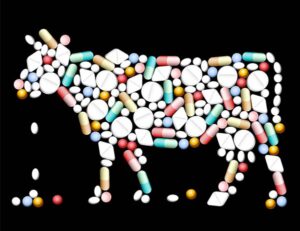
Figure 6: More growth promoters and antibiotics than meat Credit: © 2020 Shutterstock
Growth promoters, including hormonal substances have been approved by Health Agencies around the world for their use in beef cattle and sheep. They are usually used for growth promotion of animals, but this practice still raises great concern among the scientific community in terms of human health impacts.
The World Health Organization (WHO) called antimicrobial resistance “an increasingly serious threat to global public health that requires action across all government sectors and society. There is growing evidence that antibiotic resistance in humans is promoted by the widespread use of non-therapeutic antibiotics in animals.
Approximately 80% of all antibiotics sold in the United States, are sold for use in animal agriculture. It comes as no surprise that this antibiotic-related crisis is ascribed to the misuse of antibiotics that are discharged into the environment, through antibiotic residues in livestock products and wastes 16.
But how are we supposed to fight antimicrobial – resistant genes?
We are overfed yet undernourished
Environmental effects and animal food demand as discussed above are not the only etiologies of food quality decline. The epidemics of diabetes and obesity stem from less dense nutrient foods coupled with poor food choices, processed food intake and an immense consumption of sugar. Very high cost of good quality food, modern diet and lifestyle cause this problem.
Overweight and obesity are at record levels with 38.9% of adults overweight or obese, stretching from Africa to North America, and the numbers increase among adolescents.
Data from the United States Department of Agriculture (USDA), shows that the obesity epidemic began between 1970 and 198017. Diets began to shift towards processed foods, take away purchases, increased use of edible oils and sugar-sweetened beverages along with reductions in physical activity and increase in sedentary behavior. Besides the higher income countries, the sub-Saharan Africa and South Asia areas are also among countries where rapid increase in rates of obesity and overweight have been recorded including urban and rural areas 18.

Figure 7: Source: © 2020 Genevia Lifesciences AG © 2020 Shutterstock, © 2020 123rf
According to WHO’s Global Nutrition Report 2018, approximately 30.3% of school-aged children do not eat any fruit daily, yet 43.7% consume soda (sugary drink) every day. Analysis of over 23,000 packaged food products shows 69% are of relatively poor nutrient quality, with the proportion higher in low and middle-income than high-income countries 19.
Another study suggests that many people with obesity have inadequate intake of iron, calcium, magnesium, zinc, copper, folate and vitamins A and B12, possibly due to poor diet quality. Although further research is needed, along with providing recommendations for healthy eating and exercise, supplementation with specific micronutrients or multivitamins should be considered for individuals at the highest risk for established deficiencies 20.
Surveys from US and Canada note that many individuals do not meet through their diet the recommended levels of micronutrients 21, 22.
Understanding the basics of Immunity
Our body’s reaction to foreign pathogens, like flu and the new COVID-19 disease, are a complicated issue. Some diseases and infections can be prevented or controlled by our body’s immediate innate immunity where innate immune cells can interact directly with the pathogen to destroy it. There is also the adaptive immune system which includes B cells and T cells that react much more effectively and specifically against invaders of the body23 .
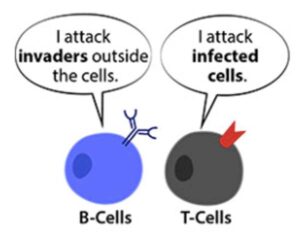
Figure 8: Source ©2011 Dr. Biology, Ask a Biologist24
Antibodies, produced by B cells, cytotoxic T cells that kill infected cells and helper T cells that activate other immune cells are key for the body’s protection. New diseases can spread rapidly if an individual was previously unexposed to a pathogen and does not have the necessary antibodies to fight the disease.

Figure 9: Source: ©2011 Dr. Biology, Ask a Biologist25
How can I boost my immunity?
Your first line of defense is to achieve a healthy balanced diet and follow a healthy lifestyle. Your immunity is a whole system and requires balance to work properly. It is understood that all nutrients, including the essential micronutrients vitamins and minerals, fulfill diverse functions in the body across the full range of metabolic activity. They work together enhancing each other’s absorption based on the body’s needs. By obtaining a sufficient amount of nutrients, your cardiovascular health will improve, your body weight will be healthy and your immunity against diseases will be enhanced.
The Genevia Lifesciences suggestions to boost your immunity are:
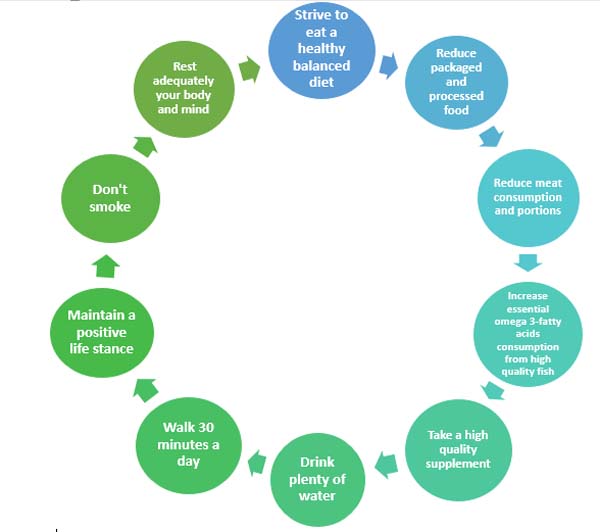
Figure 10: Credit © 2020 Genevia Lifesciences AG
Avoid inadequate or excessive supplementation
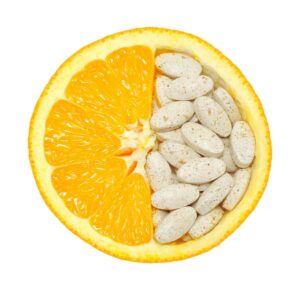
Figure 11: Credit: © 2020 Shutterstock
People should opt for a balanced, adequate and varied diet as an important step towards a happy and healthy lifestyle 26 .
In fact, according to the Genevia Lifesciences investigation, excessive supplementation doses and prolonged use caused by inadequate manufacturer guidance, is dangerous. There is a fine line, between getting enough nutrients to stay healthy and getting too much that can cause harm. Doses above the Upper Tolerable Intake level (UL) should be avoided. The UL is not a limit of excess or toxicity, it is a level of security. Every year, an estimated 23,000 emergency department visits in the United States alone are attributed to adverse events related to dietary supplements 27.
Food supplements contain active substances and when consumed in excess, instead of looking after a deficiency, they cause the opposite result, toxicity. Some studies have shown that specific substances caused lung cancer, damage to the liver and kidneys and heart attacks 28. Nutrient Reference Values (NRVs) of essential vitamins and minerals have been established by the European Commission following consultation of data gathered by the European Food Safety Authority for different groups of healthy people and consumers should pay closer attention.
Opt for Better Life Quality
The Genevia Lifesciences scientific research reveals that emerging evidence on nutrient decline in food, what we consider as a healthy diet, is challenged by so many environmental and socioeconomic factors. In turn an unhealthy nutrient poor diet could compromise our immunity.
The findings suggest immunity protection improves with a varied and healthy balanced diet, high quality supplementation of essential micronutrients without exceeding the daily NRV’s, less stress and regular exercise.
Along with providing recommendations for healthy meals and exercise to boost our immune system, high quality supplementation is one of the strategies to address nutrient gaps in our diet. Quality and certified supplementation, utilizing environmental responsible sourcing, is a means for us to know what we eat.
Globally, health and longevity, should be directed by a positive effect on the environment. After all, the latter will affect the quality of human nutrition and our quality of life.
References:
- © FAO, (2020), Q&A: COVID-19 pandemic – impact on food and agriculture, http://www.fao.org/2019-ncov/q-and-a/impact-on-food-and-agriculture/en/, [Accessed 13 April 2020]
- © FAO, (2020), Q&A: COVID-19 pandemic – impact on food and agriculture, http://www.fao.org/2019-ncov/q-and-a/impact-on-food-and-agriculture/en/, [Accessed 13 April 2020]
- Marles. J.,(2017), Mineral nutrient composition of vegetables, fruits and grains: The context of reports of apparent of historical declines, Journal of food composition and analysis, Vol. 56, p. 93-103, available from doi.org/10.1016/j.jfca.2016.11.012, [Accessed 13 April 2020]
- M.-S. Fan, F.-J. Zhao, P.R. Poulton, S.P. McGrath, (2008), Historical changes in the concentrations of selenium in soil and wheat grain from the Broadbalk experiment of the last 160 years , Sci. Total Environ., 389 pp. 532-538, available from doi:10.1016/j.scitotenv.2007.08.024, [Accessed 13 April 2020]
- M.-S. Fan, F.-J. Zhao, S.J. Fairweather-Tait, P.R. Poulton, S.J. Dunham, S.P. McGrath, (2008), Evidence of decreasing mineral density in wheat grain over the last 160 years, J. Trace Elem. Med. Biol., 22, pp. 315-324, available from: doi:10.1016/j.jtemb.2008.07.002, [Accessed 13 April 2020]
- Garvin DF, Welch RM, Finley JW. (2006) Historical shifts in the seed mineral micronutrient concentration of US hard red winter wheat germplasm Journal of the Science of Food and Agriculture. Oct;86(13):2213-2220. available from DOI: 10.1002/jsfa.2601, [Accessed 13 April 2020]
- Davis, D. R. (2009). Declining Fruit and Vegetable Nutrient Composition: What Is the Evidence? HortScience horts 44, 1, 15-19, available from: <https://doi.org/10.21273/HORTSCI.44.1.15 [Accessed 13 April 2020]
- Smith, M.R., Myers, S.S. (2018) Impact of anthropogenic CO2 emissions on global human nutrition. Nature Clim Change 8, 834–839. https://doi.org/10.1038/s41558-018-0253-3, [Accessed 13 April 2020]
- Rastogi, M., Singh, S., & Pathak, H. (2002). Emission of carbon dioxide from soil. Current Science, 82(5), 510-517. available from www.jstor.org/stable/24105957, [Accessed 13 April 2020]
- Myers, S. S., Zanobetti, A., Kloog, I., Huybers, P., Leakey, A. D., Bloom, A. J., Carlisle, E., Dietterich, L. H., Fitzgerald, G., Hasegawa, T., Holbrook, N. M., Nelson, R. L., Ottman, M. J., Raboy, V., Sakai, H., Sartor, K. A., Schwartz, J., Seneweera, S., Tausz, M., & Usui, Y. (2014). Increasing CO2 threatens human nutrition. Nature, 510(7503), 139–142. Available from https://doi.org/10.1038/nature13179, [Accessed 13 April 2020]
- Smith, M.R., Myers, S.S. Impact of anthropogenic CO2 emissions on global human nutrition. Nature Clim Change 8, 834–839 (2018). https://doi.org/10.1038/s41558-018-0253-3, [Accessed 13 April 2020]
- ©FAO, (20190, Mineral and Chemical Fertilizers: 2002-2017, 2019 Update: Inputs of Nitrogen, Potassium and Phosphate to Agricultural Soils from Mineral and Chemical Fertilizers, 2002-2017, http://www.fao.org/economic/ess/environment/data/chemical-and-mineral-fertilizers/en/, [Accessed 13 April 2020]
- Jepson, P., Deaville, R., Barber, J. et al. ,(2016), PCB pollution continues to impact populations of orcas and other dolphins in European waters, Scientific Reports, 6:18573,available from doi:10.1038/srep18573, [Accessed 13 April 2020]
- Gerber, P.J., Steinfeld, H., Henderson, B., Mottet, A., Opio, C., Dijkman, J., Falcucci, A. & Tempio, G. Tackling climate change through livestock – A global assessment of emissions and mitigation opportunities. Food and Agriculture Organization of the United Nations (FAO), Rome.
- United States Department of Agriculture (USDA), (2015), USDA Coexistence Fact Sheets Corn, [Accessed 13 April 2020]
- Christy Manyi-Loh 1,2,3,*, Sampson Mamphweli 1 , Edson Meyer 1 and Anthony Okoh 2,3 ID, Molecules (2018), 23, 795; doi:10.3390/molecules23040795
- Guyenet, S., (2011), Fast Food, Weight Gain and Insulin Resistance, Whole Health Source, [online], Available at: http://wholehealthsource.blogspot.com/2011/05/fast-food-weight-gain-and-insulin.html, [Accessed 13 April 2020]
- Popkin, B. M., Adair, L. S., & Ng, S. W. (2012), Global nutrition transition and the pandemic of obesity in developing countries, Nutrition reviews, 70(1), 3–21. Available from doi:10.1111/j.1753-4887.2011.00456.x, [Accessed 13 April 2020]
- Development Initiatives, (2018),2018 Global Nutrition Report: Shining a light to spur action on nutrition. Bristol, UK: Development Initiatives, [online], available from: https://globalnutritionreport.org/reports/global-nutrition-report-2018/executive-summary/, [Accessed 13 April 2020]
- Astrup A. & Bugel S., (2019), Overfed but undernourished: recognizing nutritional inadequacies/deficiencies in patients with overweight or obesity, International Journal of Obesity, London, 43(2):219-232. Available from doi: 10.1038/s41366-018-0143-9, [Accessed 13 April 2020]
- Dietary Guidelines Advisory Committee. (2015). Scientific Report of the 2015 Dietary Guidelines Advisory Committee: Advisory Report to the Secretary of Health and Human Services and the Secretary of Agriculture. U.S. Department of Agriculture, Agricultural Research Service, Washington, DC., available from https://health.gov/sites/default/files/2019-09/Scientific-Report-of-the-2015-Dietary-Guidelines-Advisory-Committee.pdf, [Accessed 13 April 2020]
- Health Canada, (2012), Do Canadian Adults Meet Their Nutrient Requirements Through Food Intake Alone?, Cat. No.: H164-112/3-2012E-PDF, available from: https://www.hc-sc.gc.ca/fn-an/alt_formats/pdf/surveill/nutrition/commun/art-nutr-adult-eng.pdf, [Accessed 13 April 2020]
- InformedHealth.org [Internet]. Cologne, Germany: Institute for Quality and Efficiency in Health Care (IQWiG); 2006-. The innate and adaptive immune systems. 2010 Dec 7 [Updated 2016 Aug 4]. Available from: https://www.ncbi.nlm.nih.gov/books/NBK279396/, [Accessed 13 April 2020]
- Dr. Biology, (2011). B-cells. ASU – Ask A Biologist, Arizona State University School of Life Sciences Ask A Biologist available from https://askabiologist.asu.edu/b-cellRetrieved, [Accessed 13 April 2020]
- Dr. Biology, (2011). B-cells. ASU – Ask A Biologist, Arizona State University School of Life Sciences Ask A Biologist available from https://askabiologist.asu.edu/b-cellRetrieved, [Accessed 13 April 2020]
- WHO, (2020), Benefits of a balanced diet, available from http://www.euro.who.int/en/health-topics/disease-prevention/nutrition/a-healthy-lifestyle/benefits-of-a-balanced-diet, [Accessed 13 April 2020]
- Andrew I. Geller, Nadine Shehab, Nina J. Weidle, et al, (2015), Emergency Department Visits for Adverse Events Related to Dietary Supplements, The New England Journal of Medicine, Massachusetts Medical Society, Volume 373, Issue 16, p. 1531-1540 available from: https://doi.org/10.1056/NEJMsa1504267, [Available from 13 April 2020]
- NHS, (2020), Vitamins and Minerals, available from https://www.nhs.uk/conditions/vitamins-and-minerals/others/, [Accessed 13 April]